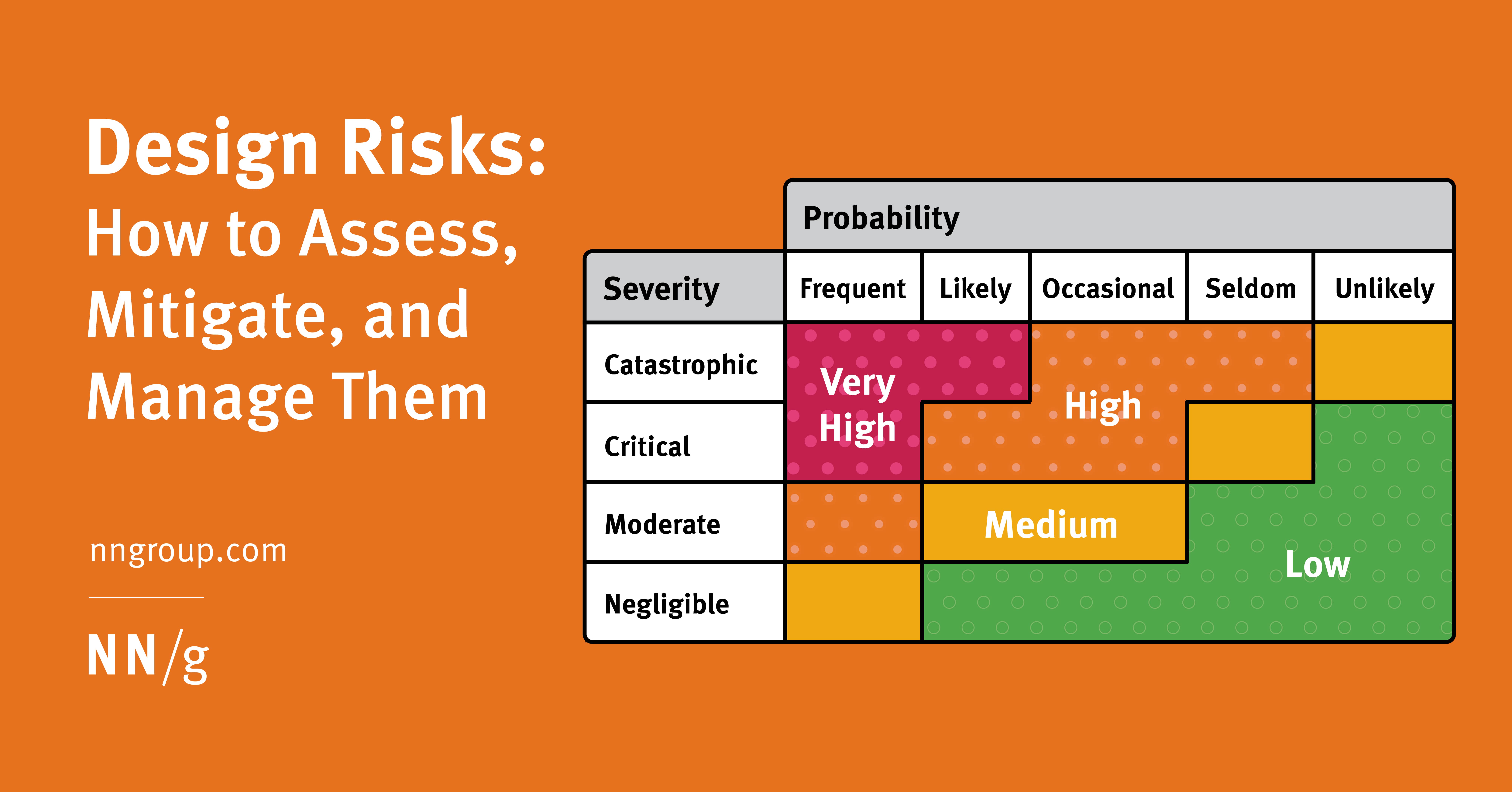Design Risks: How to Assess, Mitigate, and Manage Them
Design Risks: How to Assess, Mitigate, and Manage Them
- Incorporating risk management into design decisions is crucial for reducing harm to users and organizations.
Risks in Design
- Every major design decision comes with risks.
- Risks could include unfamiliarity, difficulty in use, unpopularity, high cost, abuse or harm caused.
- Poorly evaluated designs pose significant risks in the long term.
Importance of Risk Management
- Evaluating and managing risks systematically reduces potential risks.
- Benefits of a well-evaluated design outweigh the risks it poses.
- Risk management helps to identify, assess, control, and evaluate risks.
Risk Mitigation
- Risk mitigation involves reducing the likelihood or impact of a risk.
- Systematic reduction of risks is crucial for effective risk mitigation.
Conclusion
- It's impossible to predict all the outcomes of design decisions.
- Incorporating risk management into design decisions helps to minimize potential harm and maximize benefits.
